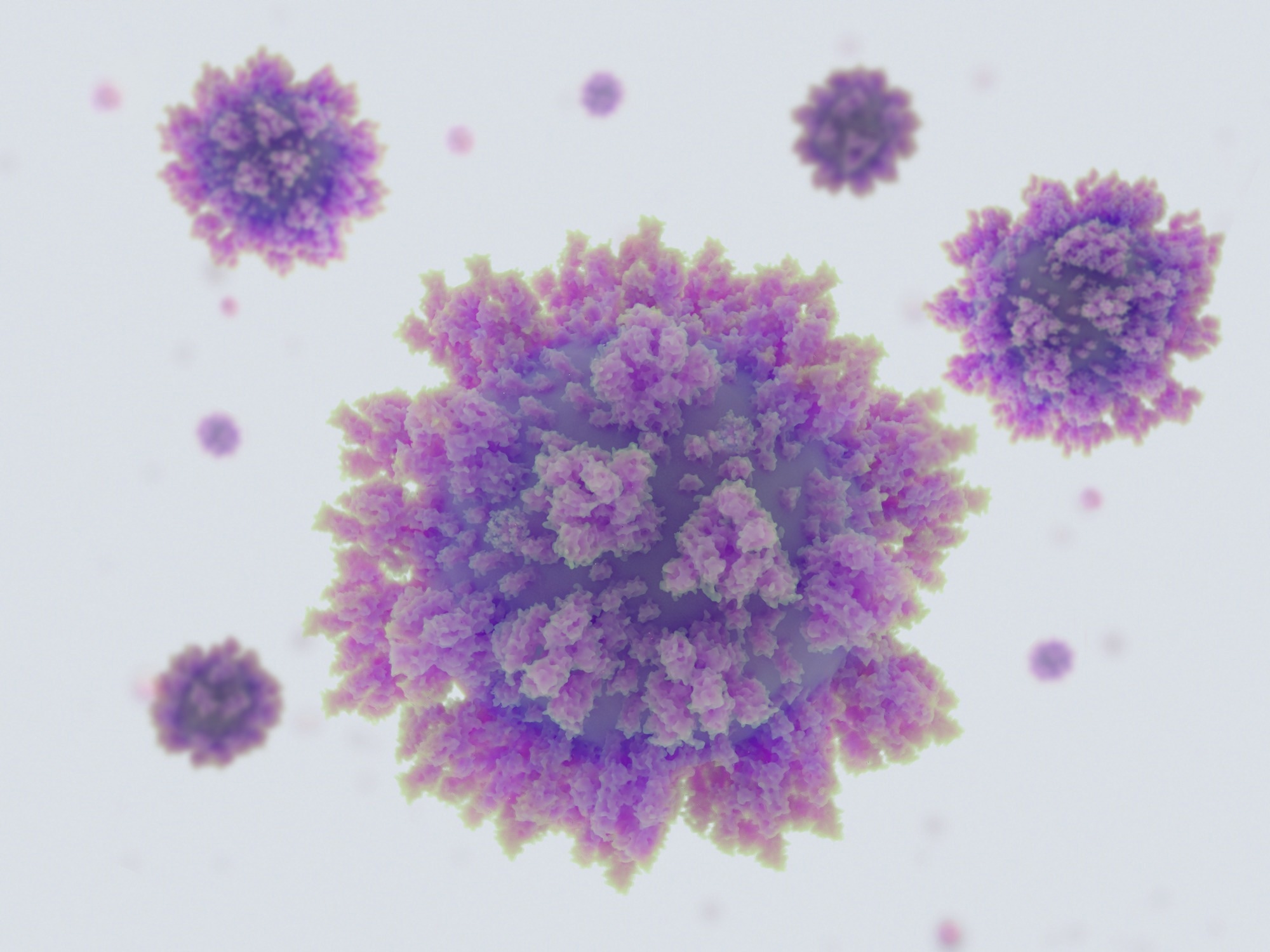A recent study posted to the bioRxiv* preprint server described the cell-free manufacturing of griffithsin (GRFT), a broad-spectrum antiviral protein.

Drugs and vaccines are currently manufactured in large and expensive facilities. The drug compound is extensively tested and characterized for potency and purity and must be evaluated for safety and efficacy in clinical trials. Production facilities are centralized and rely on well-developed supply chains for distribution.
Monoclonal antibodies (mAbs) have been pivotal during the coronavirus disease 2019 (COVID-19) pandemic, but their production is expensive and laborious. Moreover, given that severe acute respiratory syndrome coronavirus 2 (SARS-CoV-2) variants rapidly develop resistance to mAbs and other antivirals, there is a pressing need for equally effective antivirals against emergent variants that can be easily manufactured.
The study and findings
In the present study, researchers described an approach for the rapid production of GRFT using plant-based and bacterial cell-free protein synthesis (CFPS) methods. First, GRFT CFPS was evaluated in Escherichia coli using a gene containing the frequently used codons. This resulted in a low product solubility (50%) and yield (200 μg/ml), despite tweaking expression temperatures, chaperone additions, ionic strengths, amino acid concentrations, and incubation times.
Next, a new GRFT gene was designed with five serine and four glycine codons, given the high frequency of glycine and serine in GRFT. This construct was further optimized for minimizing the stability of potential mRNA secondary structures. This optimized gene (tagless-GRFT.opt) resulted in around four-fold higher protein accumulation (900 μg/ml) and six-fold increased solubility (80%).
The ALiCE system incorporating tobacco cell extracts was used for plant-based GRFT CFPS. Both pALiCE-01 and pALiCE-02 plasmids were used for cytosolic and microsomal accumulation, respectively. The authors used an N-terminal hexahistidine-tagged GRFT gene for ALiCE expression, given the apparent lack of extensive post-translational modifications in GRFT.
Microsomal accumulation with the pALiCE-02 plasmid was not detected, whereas with the other plasmid, the total protein yield was 410 μg/ml, and the product was 75% soluble. The tagged product was purified by immobilized metal affinity chromatography (IMAC) with a recovery of 36% after imidazole elution. Around 33% of the tagged-GRFT mix was collected in the flow-through fraction, suggestive of incomplete collection.
Drug Discovery eBook

Therefore, the researchers used an optimized heat-induced purification, leading to a 50% recovery of the soluble tagged product. Complete homodimerization of GRFT was confirmed using size-exclusion chromatography (SEC). The molecular weight of tagged GRFT, purified by IMAC and heat precipitation, was 31.2 kDa and 29.8 kDa, respectively.
The SEC estimate for the molecular weight of the tagless GRFT was lower than the actual molecular weight. Still, it remained within the anticipated experimental error, suggesting that the hexahistidine tag might have resulted in a larger tertiary structure than expected. The high-performance liquid chromatography-time of flight-mass spectrometry (HPLC-TOF-MS) analysis of GRFT products in both CFPS systems indicated that molecular weights conformed with those anticipated.
Next, the researchers determined if GRFT was functionally active against viruses. The protein was first assessed for its ability to bind to the envelope glycoprotein (gp120) of the human immunodeficiency virus (HIV-1). ALiCE and E. coli cell-free system-expressed GRFT exhibited a comparable binding affinity to gp120, implying that both CFPS systems could yield active GRFT.
Lastly, the team investigated whether GRFT could inhibit the binding of SARS-CoV-2 to angiotensin-converting enzyme 2 (ACE2) in a pseudovirus assay. The half-maximal inhibitory concentration (IC50) of tagged-GRFT and tagless-GRFT.opt was estimated to be 510 nm and 324 nm, respectively, consistent with previously reported estimates. Moreover, GRFT was not cytotoxic to mammalian cells even at the highest tested concentration.
Conclusions
In summary, the team demonstrated the synthesis of biologically-active GRFT in both bacteria and plant-based CFPS systems in less than 24 hours. The bacterial CFPS system was first explored, given its extensive optimization over the past few decades. Nonetheless, the protein yields were low initially.
Further optimization of codons and stability of mRNA secondary structure resulted in profound improvements in protein yield. The authors found that the lowest plasmid DNA concentration (10 ng/ml) in the ALiCE system resulted in the highest soluble protein yield. They speculated that codon optimization in the ALiCE system, as performed in the E. coli CFPS system, may similarly augment protein yield.
The decentralized production of GRFT and other biologics can be made feasible by integrating the CFPS bioprocess with an automated manufacturing platform such as the on-demand biologics manufacturing (Bio-MOD), which will allow for a tailored and effective response in regions with challenges in the supply chain of antivirals.
*Important notice
bioRxiv publishes preliminary scientific reports that are not peer-reviewed and, therefore, should not be regarded as conclusive, guide clinical practice/health-related behavior, or treated as established information.
- Borhani SG, Levine MZ, Krumpe LH, et al. (2022). An Approach to Rapid Distributed Manufacturing of Broad Spectrum Anti-Viral Griffithsin Using Cell-Free Systems to Mitigate Pandemics. bioRxiv. doi: 10.1101/2022.12.19.521044 https://www.biorxiv.org/content/10.1101/2022.12.19.521044v1
Posted in: Medical Science News | Medical Research News | Miscellaneous News
Tags: ACE2, Amino Acid, Angiotensin, Angiotensin-Converting Enzyme 2, Antibodies, Assay, Bacteria, binding affinity, Cell, Chromatography, Codon, Compound, Coronavirus, covid-19, DNA, Drugs, E. coli, Efficacy, Enzyme, Frequency, Gene, Glycine, Glycoprotein, heat, HIV, HIV-1, Immunodeficiency, Liquid Chromatography, Mammalian Cells, Manufacturing, Mass Spectrometry, Pandemic, Plasmid, Protein, Protein Synthesis, Pseudovirus, Respiratory, SARS, SARS-CoV-2, Serine, Severe Acute Respiratory, Severe Acute Respiratory Syndrome, Spectrometry, Syndrome, Tobacco, Virus

Written by
Tarun Sai Lomte
Tarun is a writer based in Hyderabad, India. He has a Master’s degree in Biotechnology from the University of Hyderabad and is enthusiastic about scientific research. He enjoys reading research papers and literature reviews and is passionate about writing.
Source: Read Full Article